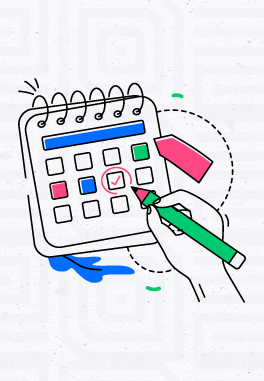Shopping is a journey.
And as it the case in many journeys, customer journey in e-commerce also contains many stages, and an accomplished purchase is just one of the very obvious stages in this journey. – surely, the favourite one of e-commerce managers.
However, as part of this journey, there is a huge bunch which falls into a category where a visitor almost reaches to the end, yet drops off at the final stage, before doing the payment. Basically, the visitor here fails to satisfy the store owner and to become a shopper and just abandons the cart, and yes, e-commerce folks, end up with another problem to be solved, called shopping cart abandonment as part of their other 99 problems.
In this post, we’ll take a look at how e-commerce companies are handling shopping cart abandonment and generate conversions out of those abandoned visitors.
If you have someone who took some steps towards buying a product/service from you, but somehow dropped off, you implicitly feel the urge to followup, right?
Well, according to a study conducted with the top UK and US e-commerce sites, %80 of e-commerce companies do not dare to follow-up.
Ecommerce in the US and the UK have been growing at more than %10 annually in the last few years. However, according to a fresh report by eConsultancy, globally in 2015, around 4 trillion USDs would be lost due to the cart abandonment alone. With such a striking finding in hand, team at Optilead, a major cart recovery solutions providers based in the UK, surveyed 50 top e-commerce sites in the UK and the US, to see how their strategies differ when it comes to abandoned carts, and to see whether they let their customers to become a part of that giant loss pile of 4 trillion USD or not.
As part of the test, the team has conducted 3 trials on each of the 100 e-commerce companies (in total 300 abandonment tests) to see how the companies reacted, and here goes the findings:
More than %85 of cart abandonments were ignored
This a totally alarming finding. Out of the 300 tests, only 42 have received a reaction from the company. %82 of the tests run in the UK e-commerce market were ignored and in the US, this rate was %89.
(Only) %22 of the e-commerce companies showed a reaction for cart recovery
As an addition to the response rates for the above-mentioned tests, only 22 out of the 100 top e-commerce companies attempted to recover those abandoned carts.
A total of 453,800 USD of abandoned carts was just left ignored
Within the test, 521,000 USD were abandoned in total with 300 tests.
In the US, 194,000 USD of 203,000 USD (around %95) was just ignored. In the UK, 259,000 USD out of 318,000 USD (around %81,4) was ignored.
Calling has never been part of the cart recovery operation
There are many reasons for online shopping cart abandonment like frictions in the checkout process, ambiguous shipping costs, delivery options, payment issues, etc. When such issues had been faced, an e-commerce savvy support team could just jump into a call and engage with the visitor (or shopper-to-be) to recover the abandoned cart.
Here, the timing of the call also matters. Recovering an abandoned cart with a call in the first 15 minutes is 3 times more likely to do the same with a call just one hour later. Also, through an almost real-time approach, recovering an abandoned cart over the phone is 10 times more effective than email segmentation and targeting.
As it’s the case in many rooms for improvement, the findings and the problem is too obvious to attack, yet there’s still a lack of interest from the e-commerce companies.
However, as e-commerce segmentation strategies evolve day by day, and the understanding of e-commerce customer lifecycle matures, we expect to see the ratios and the nominal values of the abandoned cart recovery will also increase.

